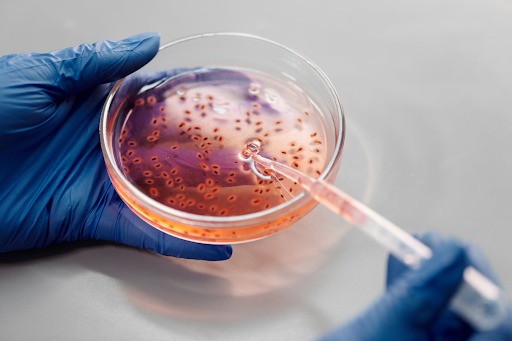Healthcare has the most impactful technological benefits that improve medical treatment. The x-ray machine, CT scans, new medicines and robotic influence on surgical procedures are few examples that immediately come to mind. Therefore, it is not surprising that the United Kingdom spends £1.6 billion annually on medical research to find new ways to improve healthcare delivery. So have you wondered what drives the global move towards healthcare technology? Listed below are some great ways that technology is improving multiple areas within the healthcare industry as a whole.
This has been one of the most significant breakthroughs in healthcare, and the medical community continues to make more discoveries in this area. Genome refers to the complete set of genes that make up a being or an organism. The genome contains all information about the organism and what makes up its characteristics. In humans, genome sequencing helps detect inherited conditions and how they can be tracked. It has influenced further research into cancer progression and tracking the outbreak of diseases.
Since genome sequencing was discovered, scientists have described it as the ‘instruction book’ that provides detailed information on what wasn’t known before. Even better, genome sequencing has become the catalyst driving several life-saving procedures in the medical world. Medical history attributes the first generation gene sequencing in the early 1970s to two scientists, Allan M. Maxam and Walter Gilbert. Subsequently, their technique for sequencing was improved by Frederick Sanger in 1977.
Better treatments, interaction, equipment, and medicine
Indeed, it is a natural progression for treatments, equipment, medicines, etc., to get better in the wake of added technology. Physicians can now provide comprehensive care for persons suffering from chronic ailments that would have killed them years earlier. For example, chronic obesity and other weight gain related conditions can now be guided better with enhanced medications.
It’s therefore not surprising to see an impressive range of health products such as those found on steelsupplements.com/ to improve wellbeing. Even better, it has created a platform to enhance interactions among physicians and medical researchers. Furthermore, improving healthcare technology has contributed significantly to narrowing down the focus and human resources previously required for inpatient care and treatment.
Telehealth
This is a blend of telecommunication technology and healthcare. Also known as telemedicine technology, it came about through the need to assess the health of NASA astronauts and engineers sent to space in the 1960s. Over the years, this technology moved away from NASA classifieds into the mainstream and continues to improve healthcare worldwide. Interestingly, other factors drive the need to have even more enhanced telehealth and telemedicine technologies. A few examples of these factors are:
- Access to healthcare in rural areas
- Cost-benefit reasons
- Convenience
According to the 2019 white paper on this matter, telehealth can protect the NHS purse to a tune of £7.5 billion, which would have been spent on public health services in England. More importantly, telehealth and telemedicine drastically cut out waiting times, improving service delivery.
Faster lab results
Did you know that before technology became a major driving force in laboratory works, it could take you weeks or up to a month to get a lab result from a sample? Thankfully, that is no longer the case, as several medical test results are available within minutes. It has therefore lessened the anxiety usually characterised by long waiting periods for medical test results.
Wearable technology
A few decades ago, many people would have doubted the veracity of wearable medical devices. But today, it is a reality, and it looks like there is more to come. Medical wristbands, wristwatches and even eyeglasses have more to do with the medical world than fashion. Better yet, you could say that fashion and the medical world have joined forces with technology to deliver more than you would expect. These wearable medical devices are designed to collect data from the wearer to improve their wellbeing.
Image | Pexels.com
Physicians and patients can assess the information collected to decide on their current health status. Therefore, the next time you go out for a jog and decide to fix your fitness tracker and other biosensors, you will know more about them than just being sports gadgets.
Indeed, the world is moving at a pace only a few people would have correctly predicted four decades ago. Meanwhile, in the thick and thin of it all is technology taking a non-negotiable position in the driving seat. Hopefully, there will be more innovations and interventions where health technology is concerned.

